Museum of
Panama
Other pages from our visit
to Panama:
Monkeys,
Embara vilage, Flora, Fauna,
Canal and
lake, Modern Panama, Old Panama, Hotels and friends
Our group had the
museum nearly to ourselves.
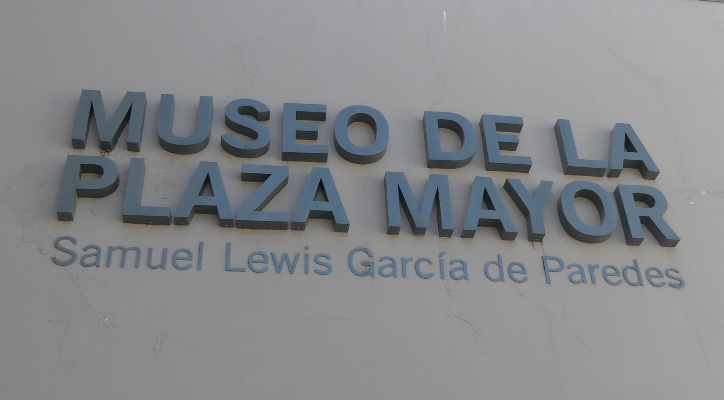
The early missionary influence was evident in some of the art.
It was used mainly in altarpieces and religious possessions.
Some were
wood images, and others were meditation carvings in high relief.
Others were "dress-up" mannequins, with both head and arms carved in
wood.
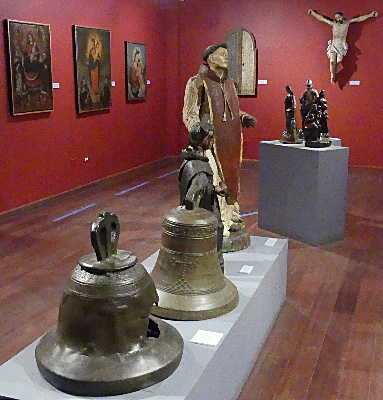
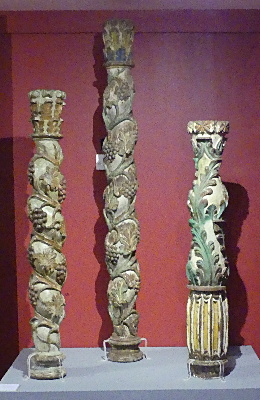
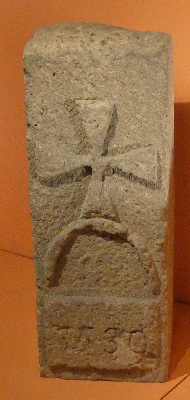
You have probably heard of the pirate Henry Morgan. The museum had a
display that reported "He took advantage of his friendship with the
governor of Jamaica to obtain a "letter of marque" which he used to
attack the city of Camaguey, Portobelo, Maracaibo and finally
Panama. As Morgan attacked the latter city after the signing of a
peace treaty between England and Spain he was imprisoned and sent to
London in 1672. However, shortly afterwards he was knighted
by King Charles II of England. He returned to Jamaica as deputy
governor in 1675: ironically, among his functions was eradicating
Caribbean piracy. Still, he
continued business relationships with his former buccaneer comrades,
which eventually cost him his dismissal. Already a heavy drinker, this
led him to delve more into this vice. Eventually Morgan was
diagnosed with edema or dropsy.
He died in Jamaica at the age of 53 and received a state funeral,
leaving a considerable fortune. It included 3 sugarcane
plantations and about 130 slaves for his godchildren and sister, as he
had no decedents."
Then as now it is profitable to have powerful friends.
Buckles and beads
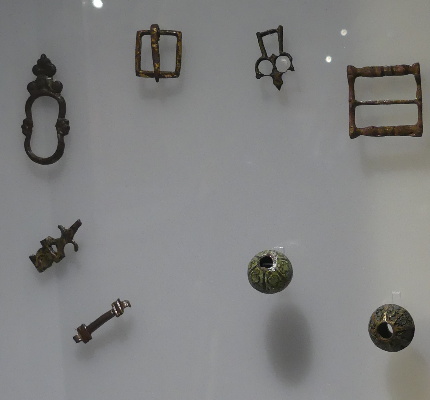
Among the objects exhibited here a dagger, precious metal beads and a
crystal crucifix.
These represent power and high socio-economic status.
The Governor and militiamen were the only people who could be armed
inside the city.

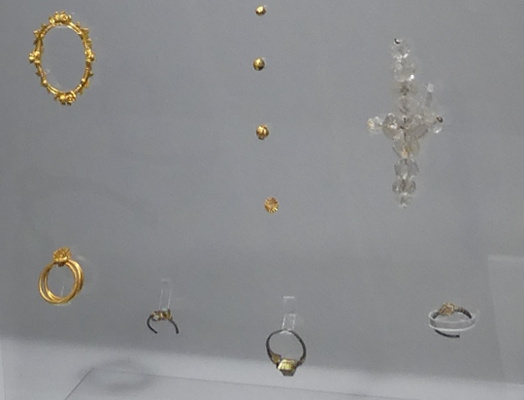
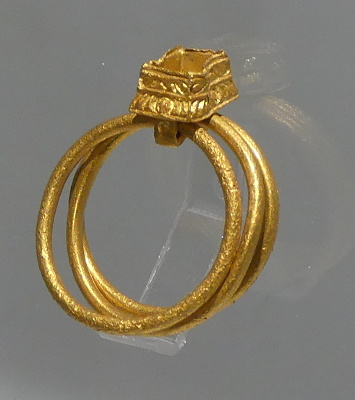
A model of the town and harbor showing what it was like in colonial
times.
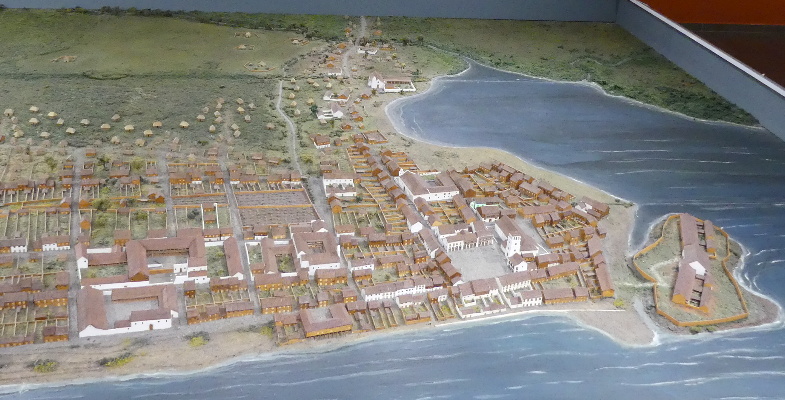

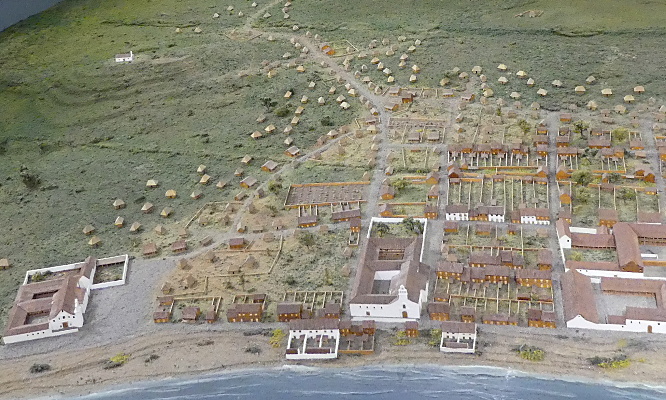
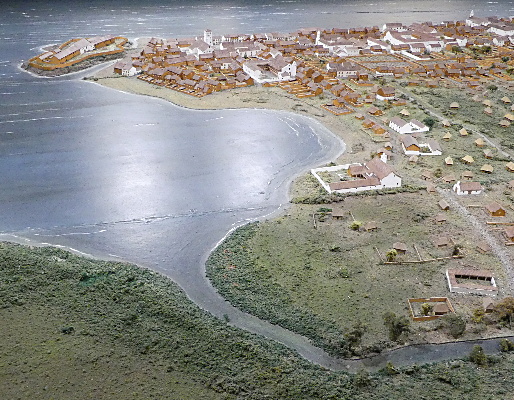
Cannon balls and shot.
The other two items were used to load gunpowder and tamp the charge.
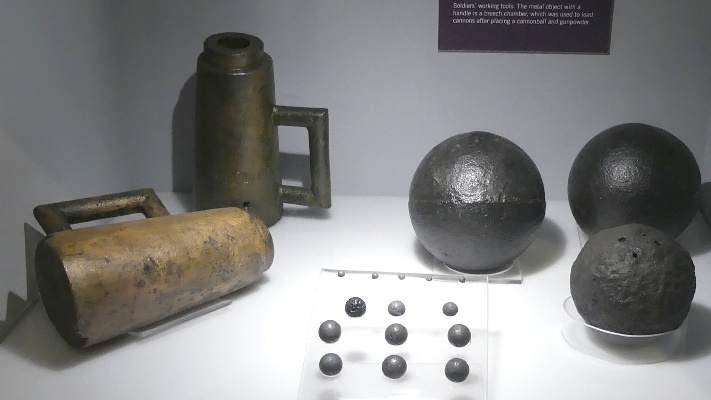
Artifacts from early buildings.
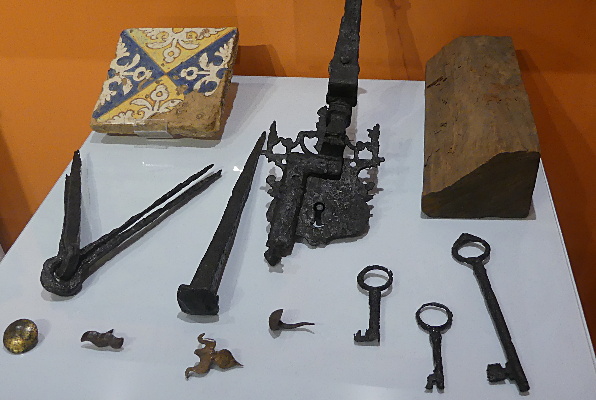
Top and middle: fishing weights and stingray barbs
Bottom: deer bone flutes, golden frog pendant and oyster shell bead
bracelets
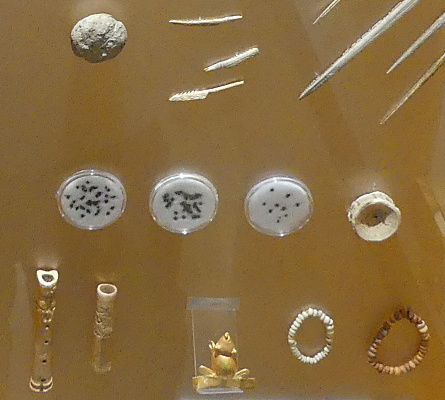
And a better view of the frog and
beads.
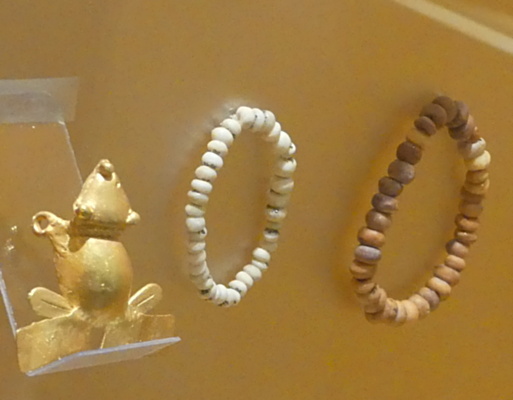
If you want tortillas, first grind the corn with these.
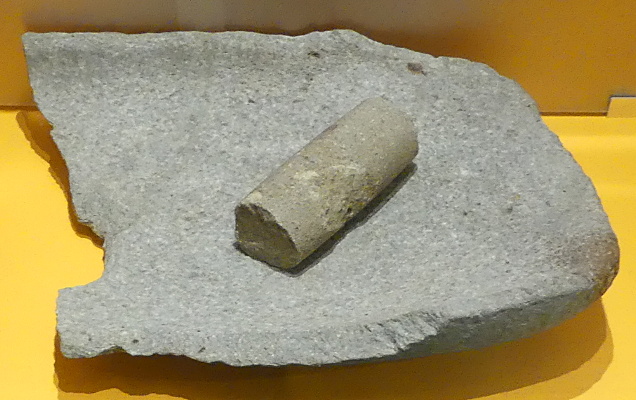
Dioramas of indigenous hunting and home construction.
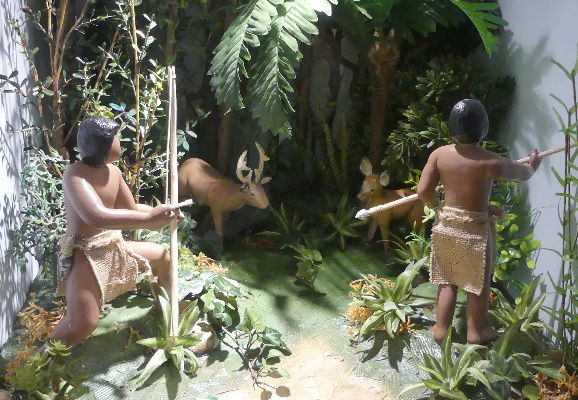
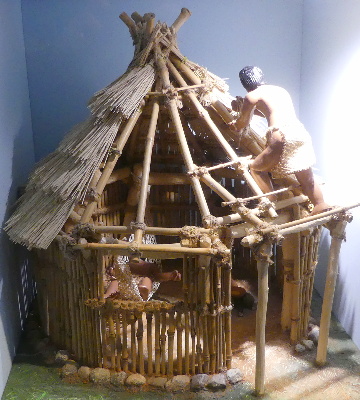
Functional and ornamental pottery.
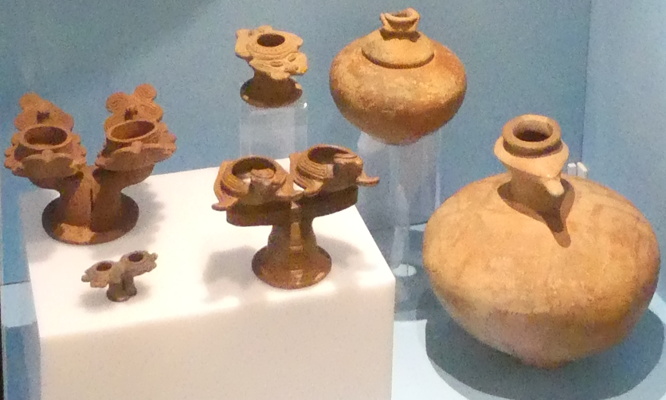
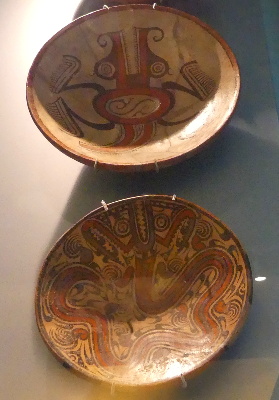
A necklace of spiny oyster shell
beads which would be worn by a woman as her only ornament.
It is segmented into groups of 2, 3,
4, and 5 orange beads separated by 10, 11, or 13 white beads.
In this symbolic numerology: '2' was
related to origins, as all
origins can be thought of as doubling; '3' was related to household
fire.
And 4'
was linked to the four corners of the universe; '5' expressed
instability.
Not included on the necklace was '9'
probably because it pertained to the underworld and the night and '13'
was the number for light.
I haven't found their meaning for the
'10' or '11' on the necklace.
Ornaments made with this shell
symbolize high social rank, especially during the first millennium CE.
They were later replaced by golden
ornaments as the symbol of rank in the societies of pre-Columbian
Panama.
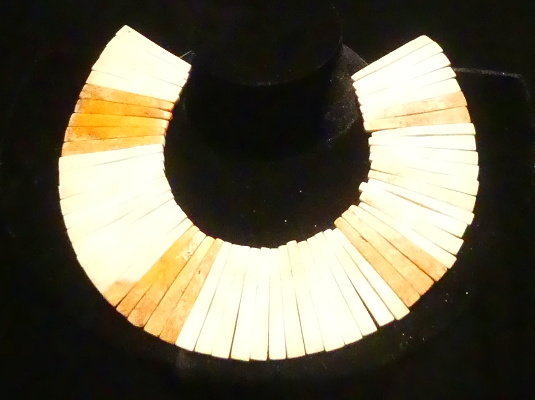
The museum's description of this
exhibit said
"It contains the remains of a young
man who was settled in his grave before the appearance of rigor mortis.
This indicates he did not succumb of
natural causes: he died to be buried, voluntarily or involuntarily
between 1410 AD and 1460.
He displays a restful appearance, for
his right arm was placed on his lap and his head was arranged carefully
over his left arm.
Dozens of stingray 'needles' were
placed next to his right hand, while several stone blades were at his
feet."
I debated whether I should take this
picture and include it in this page since it seems disrespectful.
Ultimately I felt it was important to
show this aspect of pre-Columbian life.
I do have an objection to the
description of rigor mortis.
It lasts for only about 24 hours
after death after which it disappears so the body was not necessarily
quickly placed in it's final position.
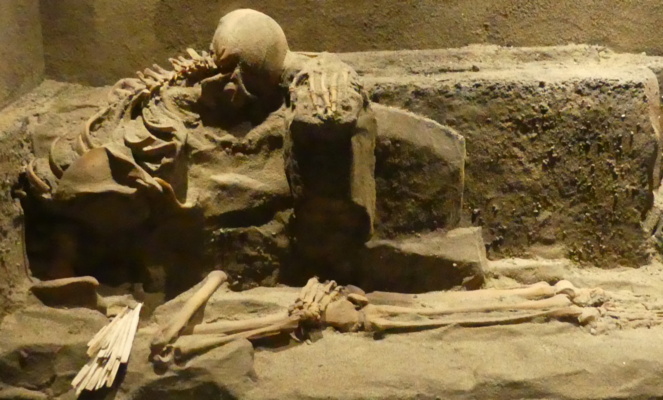
A table was prepared with the best
crockery and cutlery pieces to celebrate marriages or births.
Families who could afford it
preferred to import utensils from Europe; pottery made in Seville was
the most appreciated.
Regular meals were taken in the
kitchen or in the private rooms; there was no furniture made just for
eating.
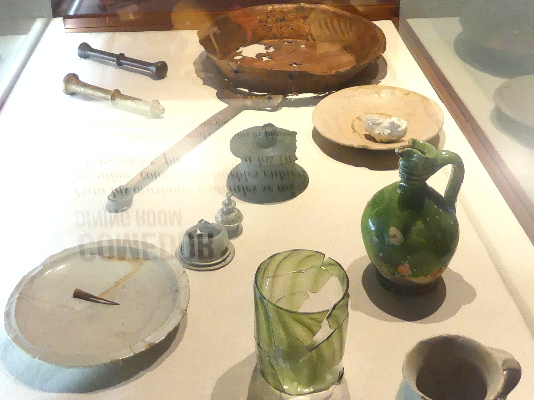
Materials that would be found on a
writing stand.
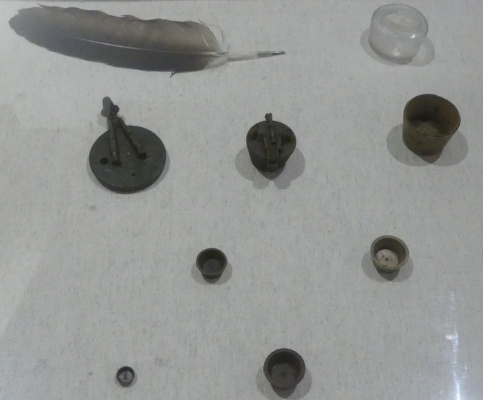
These pots would have been used for
the storage of liquids or grain.
Most had rounded bottoms unlike Greek
amphorae with their pointed bottoms.
They were probably stabilized by
placing them in soft dirt or straw.
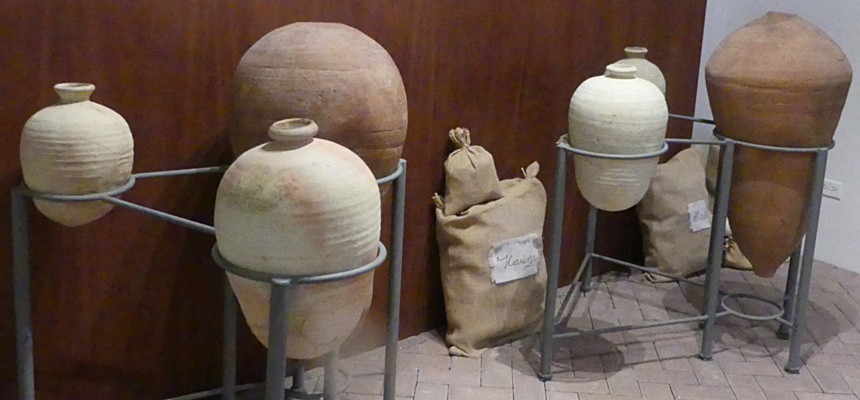
Buttons, needles, and pins from the
colonial era.
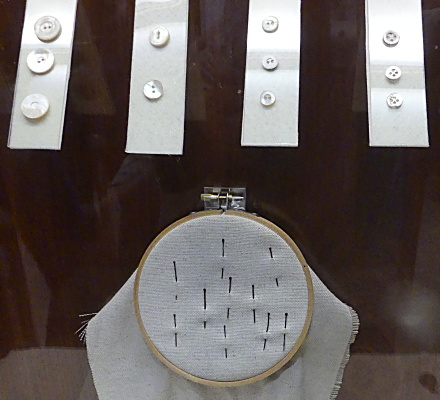
Other pages from our visit
to Panama:
Monkeys,
Embara vilage, Flora, Fauna,
Canal and
lake, Modern Panama, Old Panama, Hotels and friends
E-mail Nancy and Alan

www.mrtc.com/anvk web site by Alan Kuehner
is licensed under a Creative
Commons Attribution-Noncommercial-Share Alike 3.0 United States License.
Permissions beyond the scope of this license may be available at http://members.mrtc.com/anvk/permit.html.

